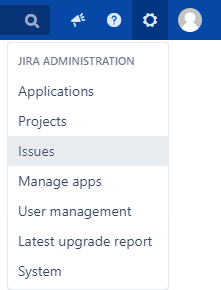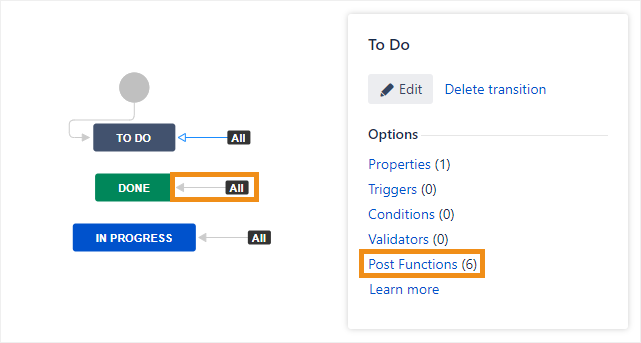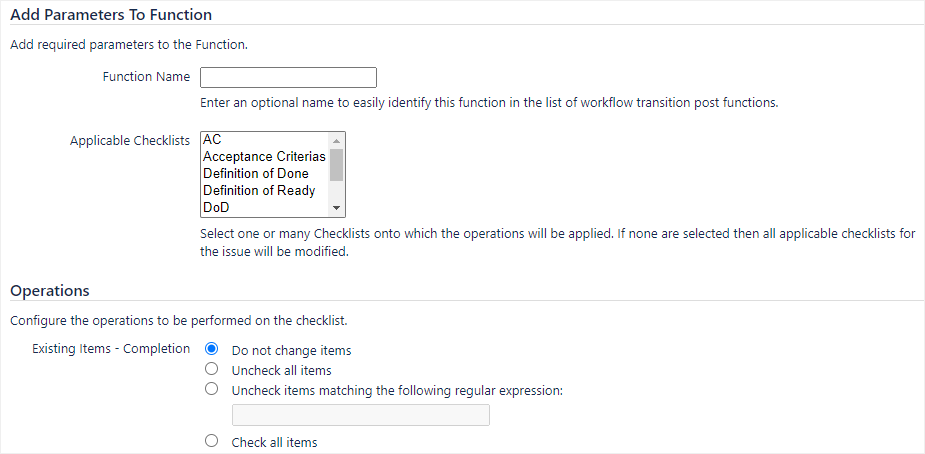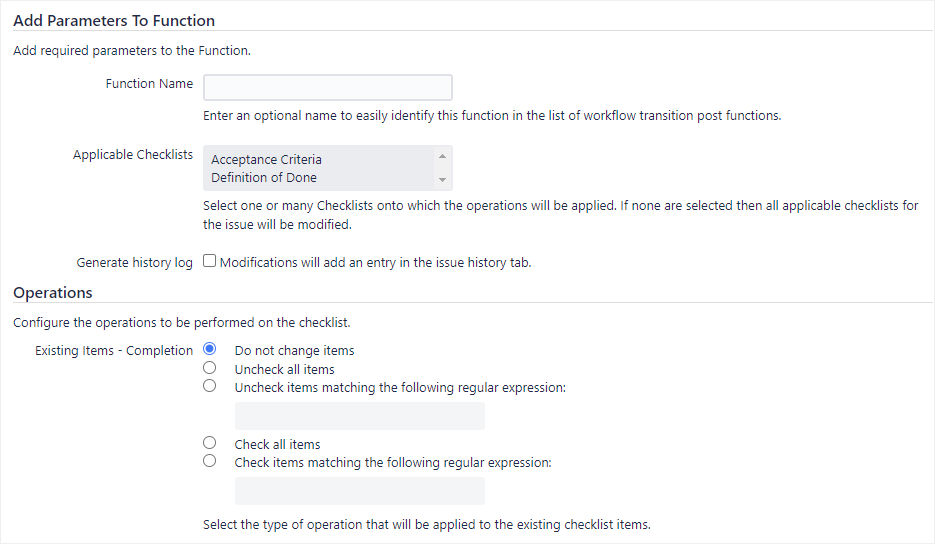| Note |
|---|
You need administrator rights in Jira to perform the tasks on this page. |
You can use the Modify Checklists post function to automatically perform operations on checklists when a workflow transition occurs. This can be helpful to adapt checklists to a particular workflow; for example, you could configure the post function so that once the developers finish developing a feature and move the issue to the “To Review” state, the checklist items that the QA teams need are automatically added.
| Info |
|---|
To learn more about configuring workflows and post functions, see the Atlassian Jira documentation. |
To set up a post function that will modify checklists during a workflow transition:
Go to Administration > Issues.
In the sidebar, go to Workflows > Workflows.
In the Actions column for an existing workflow, click Edit.
Select the transition that you want to modify:
In Diagram mode, click on the arrow that points to the transition, and then click Post Functions in the panel that appears on the right.
In Text mode, click on the transition name in the Transitions (id) column.
In the Post Functions tab, click Add post function.
Select Modify Checklists and click Add.
Configure the parameters, which are described in the table below, and click Add.
On the Workflows > Workflows page that you are returned to, publish your edited workflow so that your changes take effect.
Setting | Description | ||||||||
|---|---|---|---|---|---|---|---|---|---|
Add Parameters to Function | |||||||||
Function Name | The name of the function, which is only displayed for reference in the list of post functions. | ||||||||
Applicable Checklists | The checklist(s) to which the condition will be applied; use Shift + Click or Ctrl + Click to select multiple. If none are selected, the condition will be applied to all checklists associated with the issue. | ||||||||
Generate history log | Check this field if you want the modifications to generate a log in the issue history.
| ||||||||
Operations | |||||||||
Existing Items - Completion | The impact on the checkboxes of existing checklist items when the workflow transition occurs:
| ||||||||
Existing Items - Statuses | The impact on the statuses of existing checklist items when the workflow transition occurs:
| ||||||||
New Items | The items and/or headers that will be added to the checklist when the workflow transition occurs: Operation
Type
Only append items that do not existYou can check this field to prevent items from being added multiple times if the same transition occurs more than once.
| ||||||||
Conditions | |||||||||
Conditional rules | The issue rules that must all be satisfied before the condition will be applied. If no issue rules are created, the condition will always be applied.
| ||||||||
| Status | ||
|---|---|---|
|











